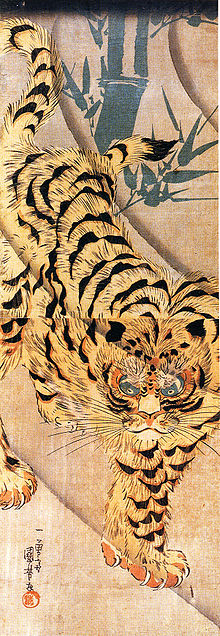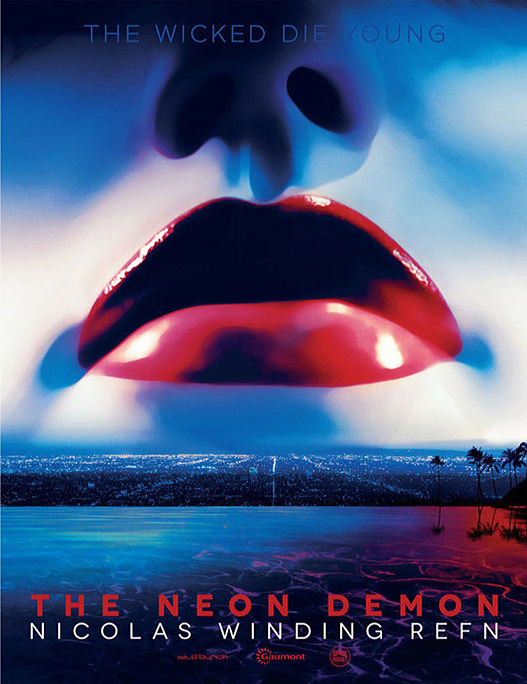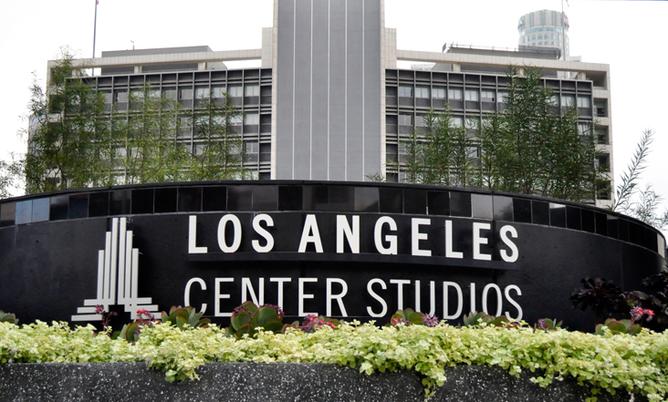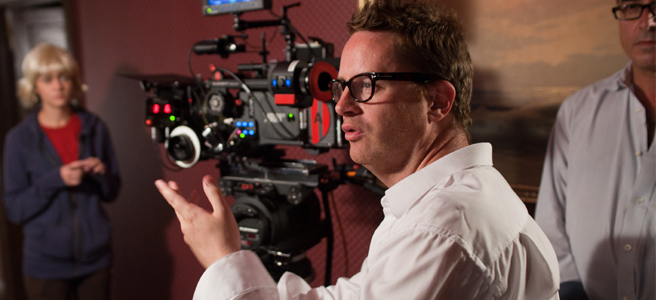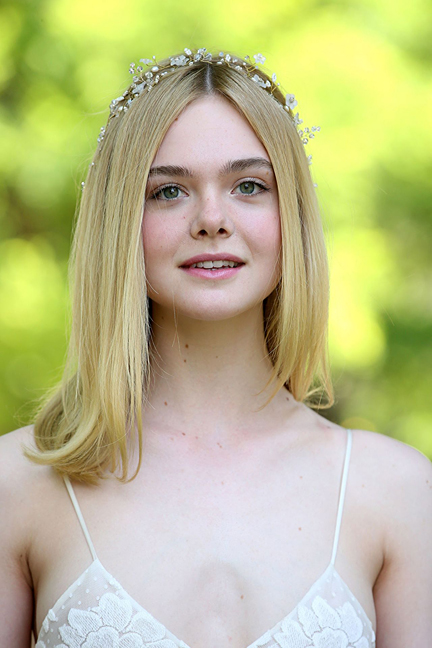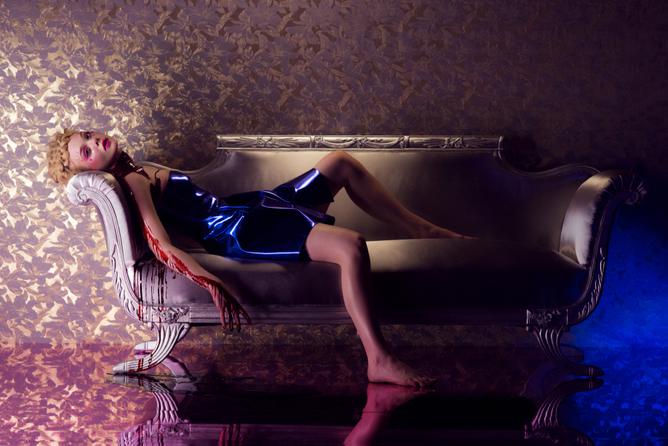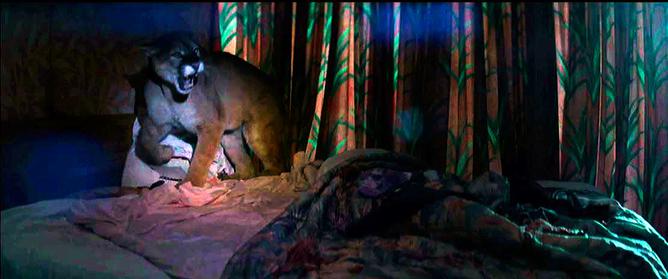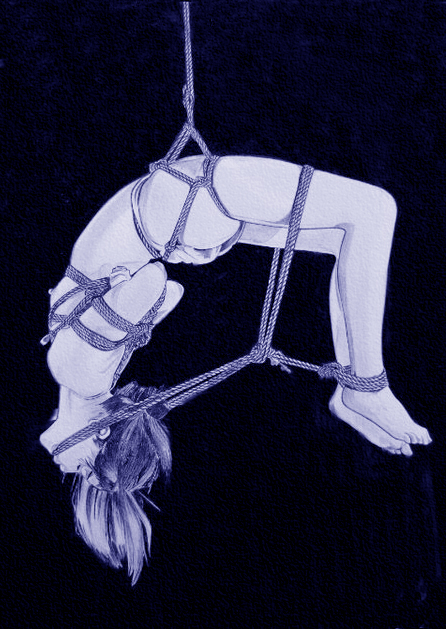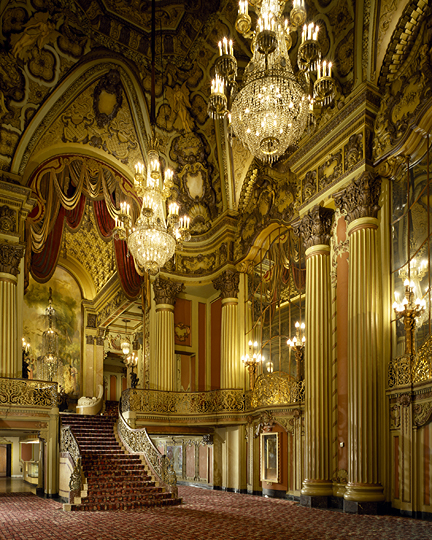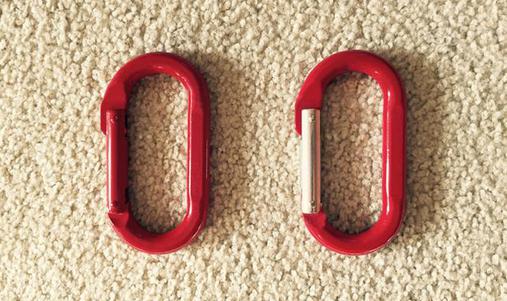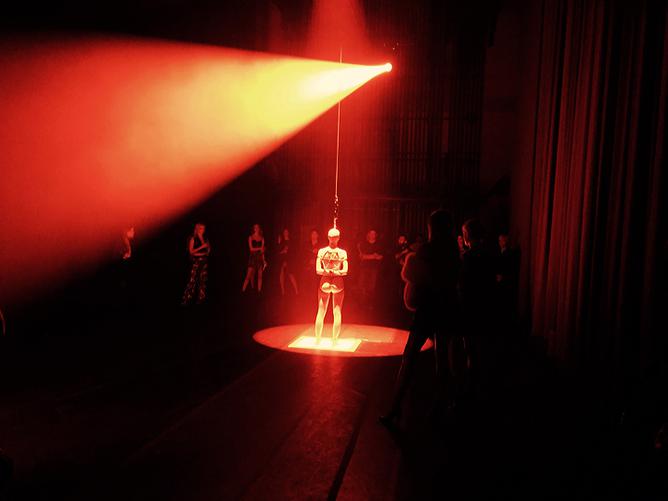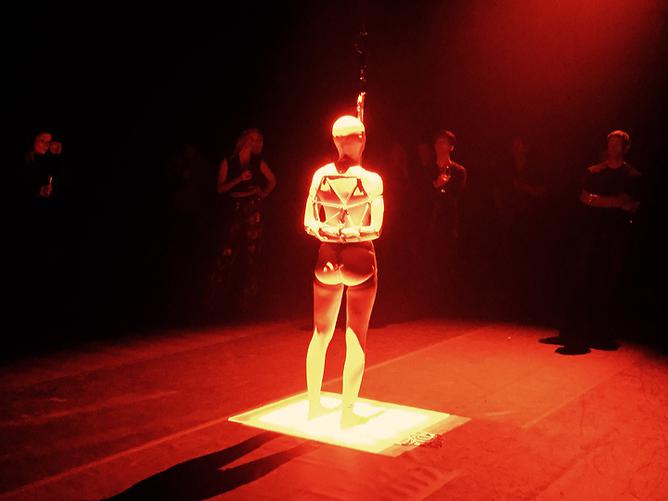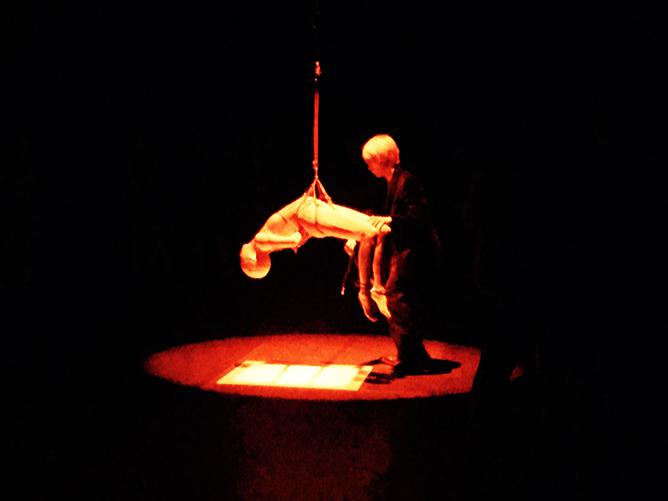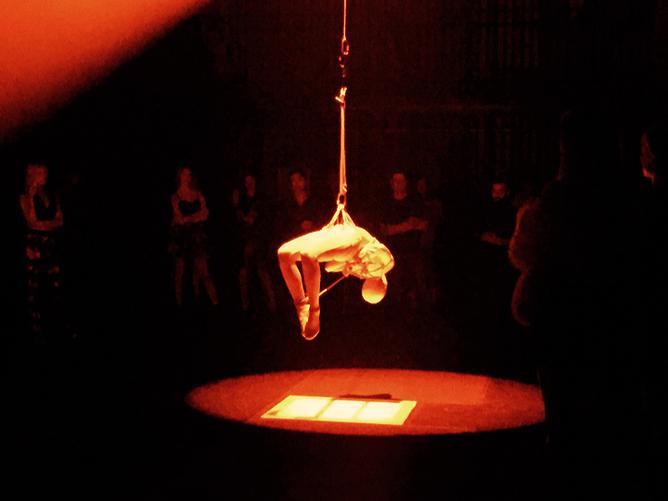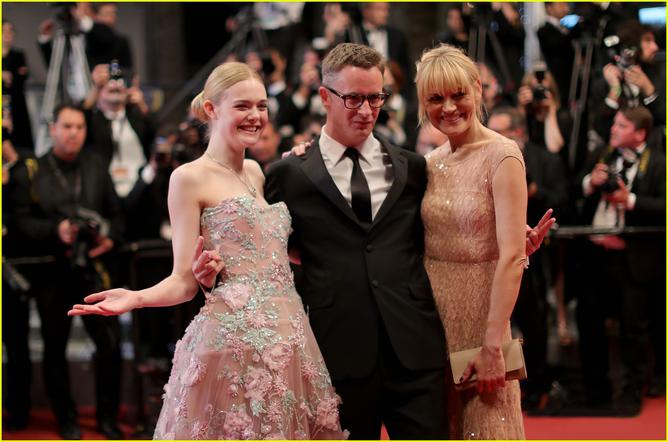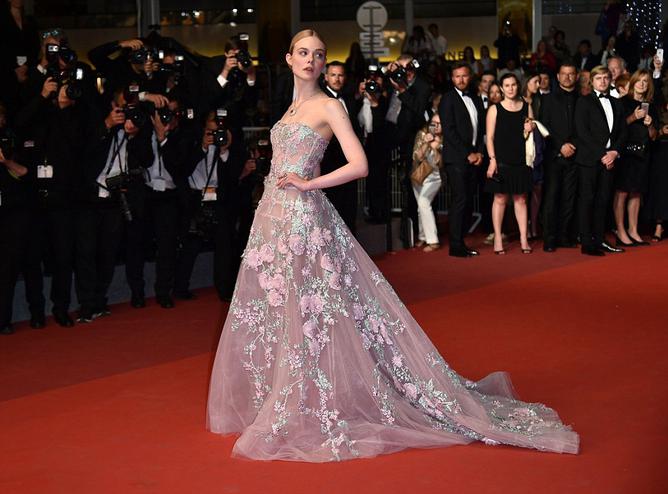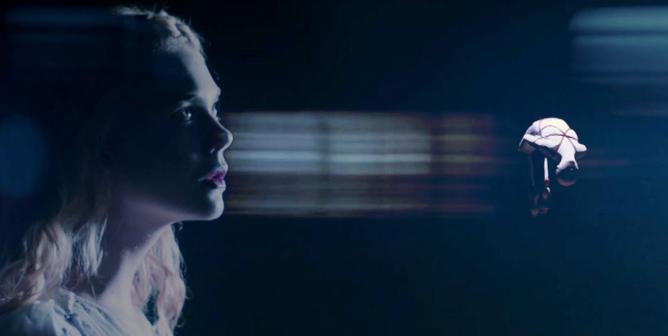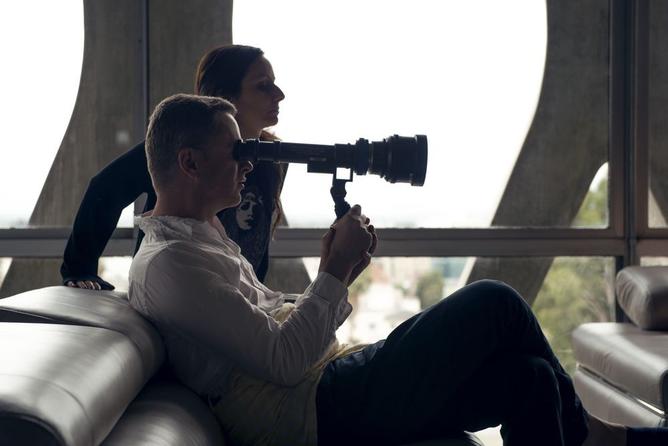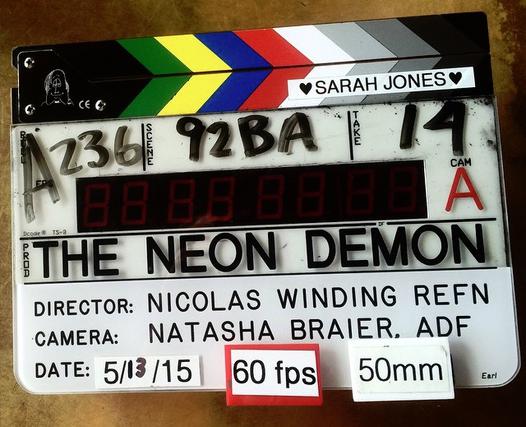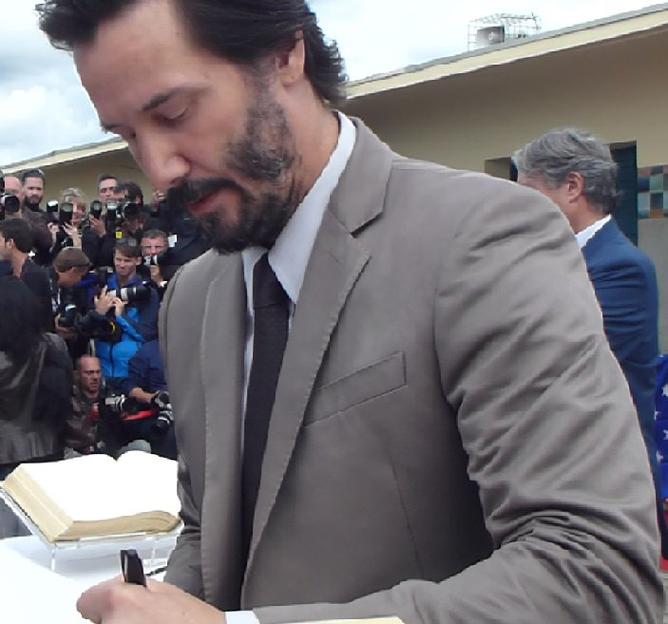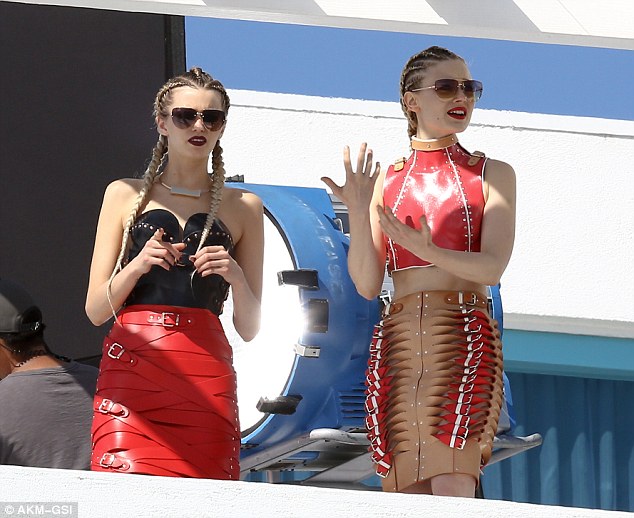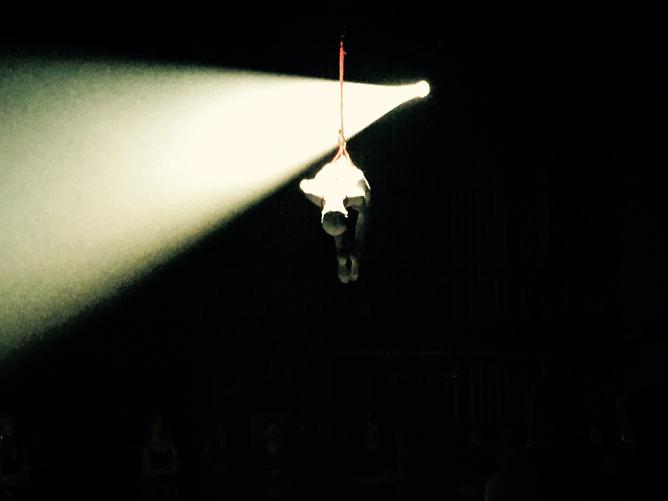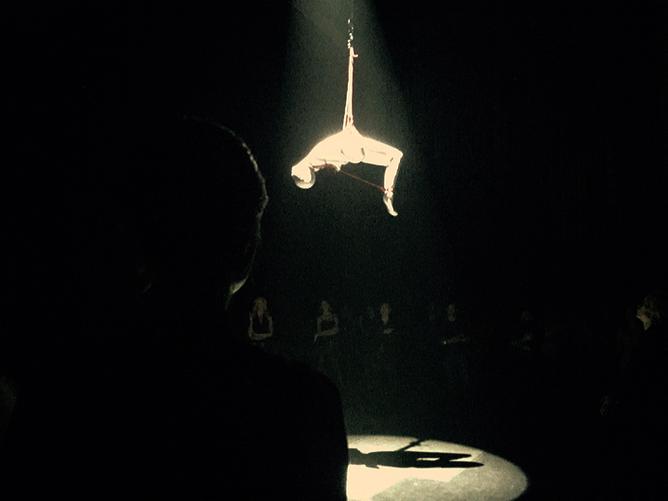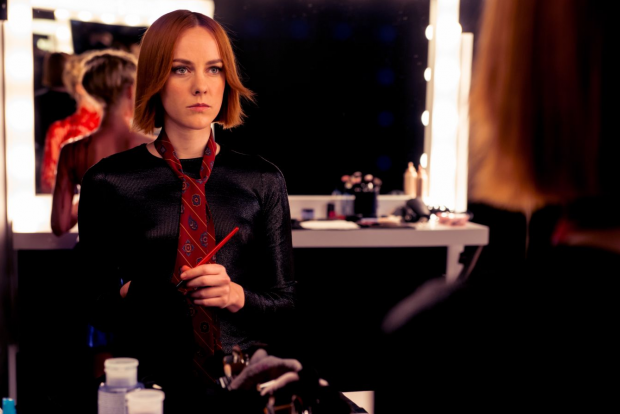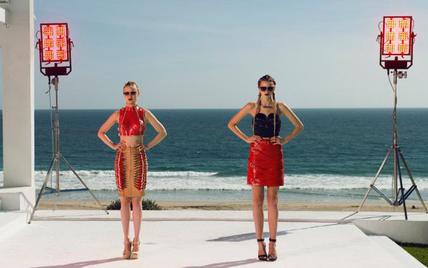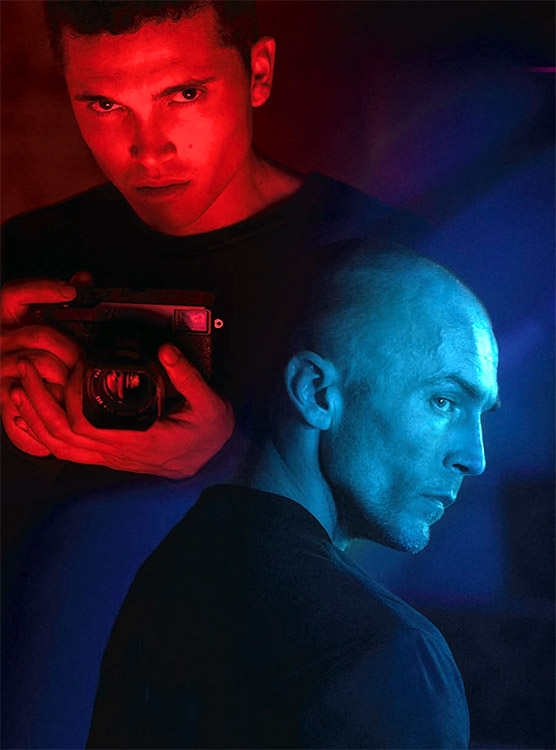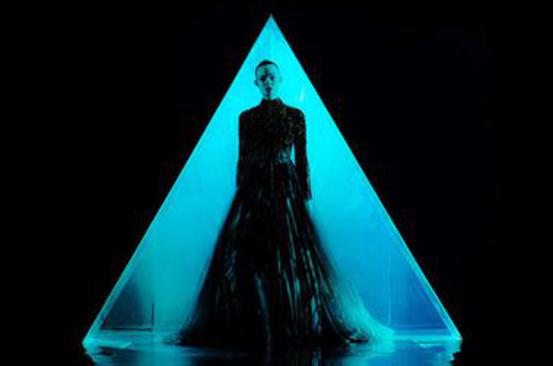Or everything you always wanted to know about Japanese erotic bondage when you suddenly realized that you didn't speak Japanese
The Beauty of Kinbaku
Kinbaku
and Art
Please note: no part of these articles may be reproduced by any means without the express written consent of the author or the publisher, King Cat Ink.
Chapter Eleven
Kinbaku and Art-American Bakushi Part Six –
Rigging for “The Neon Demon”
by Master “ K”
This page is best viewed on Google Chrome.
Please join me next time as we continue our exploration into the fascinating subject of “Kinbaku and Art!”
While Mr. Ho completely understood my insistence on a skilled and experienced model to do the work, both for safety and efficiency, he was anxious that I consider the proposal because it would cut down on the budget since the volunteer was already on salary. “Has this person ever done anything like this?” I asked with some temerity. “Never,” came Mr. Ho's curt reply.
On the other hand, I quickly realized that if I didn't at least consider the suggestion the production manager would question my own professionalism.
Tall, bespectacled and with the air of an intellectual, Refn seemed very tired when he came into the studio office for our meeting. When I asked if he had been working for many days he surprised me by saying he and his crew had just begun. When he noticed my sympathetic and quizzical look, he simply said, “Making a movie is a tough job.”
The Kinbaku scene under discussion takes place early in the film when the naïve young model is taken to an after-hours club by her newfound “friends” where a “different” kind of show is the main attraction.
It seemed that word had gotten around the crew about the suspension scene and he had received a visit from one of the women working on the film asking if she might volunteer to do the stunt!
Imagine my surprise when, instead of a starry eyed wannabe, the young woman I met (let's call her “G”) was intelligent, serious minded, very professional and down to earth in attitude and quickly understood all the risks and challenges involved in doing the scene. She added that she had a personal interest in rope bondage and was intrigued by the art of Kinbaku. She was also extremely attractive, lithe and athletic and absolutely filled the bill as far as the body type that director Refn wanted for his suspension.
Which is why, before I knew it, instead of turning her down outright, I had agreed to do a rehearsal with “G” to at least give her a chance to prove whether she could or could not do the stunt.
I hurried over to check on “G” and was delighted to see that she was doing just great. However, as I walked back to my position near the camera I overheard director Refn ask the man in charge of the pulley if he couldn’t “pull her higher?” It was then that I remembered the director’s twinkle in the eye during the presentation!
We also checked and rechecked “G’s” costume for fit and comfort and, of course, thoroughly checked the suspension point and pulley rigging that would take the bound model up into the air. All seemed perfect.
With that the director and most of his crew departed to get back to work and I was left with production manager Victor Ho to complete the negotiations.
Of course, all this was months in the future as I made my way on a windy March day down to LA Center Studios to meet the Danish director whose only other film I had heard of was the well received “Drive” (2011).
We quickly agreed upon a fee, a shoot date and discussed some possible rope bottom/models who could do the scene. Mr. Refn had made it pretty clear that he wanted a tall, statuesque woman, one that matched the film’s fashion model milieu, to do the suspension. I wasn't sure if the model that I had worked with on the music video would fit that bill but I told him that I would give the matter some serious thought and that I was sure that from my contacts I could find the right person. If only I had known what was coming next!
The rehearsal was held at my good friend and student Yzen’s residence where a professional suspension point was available. I had asked “G” to bring the costume that was required so that we could not only rehearse the suspension but all of the difficulties of doing the scene in costume.
Director Refn seemed even more exhausted when the presentation was held for him and his crew at the end of a long day of filming. “G” seemed especially nervous but was very relieved when the director and everyone else gave an enthusiastic “thumbs up” to our efforts.
The next step was to show the results of the rehearsal to the director, the director of photography and the designer to get their input and approval. Gulp!
I had gotten only a few miles down Interstate 10 when my phone rang. It was Mr. Ho and what he asked me was so surprising that I had to pull off the highway to concentrate on the call!
To say my heart sank would be an understatement. The scene to be filmed was definitely dangerous because, unlike the typical BDSM stage show, the model would not be able to move from pose to pose to relieve the stresses on the body that most rope suspensions create. On top of that, the model would be essentially blind due to the full body suit which would cover her naked form from head to toe. This meant that only a very strong, courageous and athletic model would do.
The plot then follows Fanning on her adventures in LA where her beauty and youth place her in significant danger amongst the women she becomes associated with in the cut-throat fashion industry; women rivals who are both jealous and murderous.
It was clear time was of the essence and when we were joined by the film’s cinematographer, Argentinean born Natasha Braier, the designer Elliott Hostetter and the production manager Victor Ho, Refn quickly got down to business.
Refn quickly made it clear he wanted his scene to be exactly like that, right down to the full, white body suit that made it look like a glistening living mannequin was helplessly suspended in mid air. It was also clear he was concerned about how long such a suspension would take to do. He seemed relieved when I told him that with the right setting, secure suspension point and skilled model it could be done expediently whenever his lights and camera were ready.
Someone in the team had apparently seen the music video “Come Unwound” by the talented group The Bulls that I had done the Kinbaku for. That video had involved a ballet like reverse Gyaku-ebi suspension with a model clothed in a full body suit.
Which is why a few days later I nervously awaited a quickly arranged coffee meeting with what I was sure would be a starry eyed, youthful volunteer who I was almost 100% certain would not fill the bill. In fact, I was so certain the arrangement would never work that I had already begun rehearsing a polite speech listing all the logical, safety oriented reasons why, despite the volunteer's brave, if foolhardy offer, I simply couldn't take the risk of using someone so inexperienced.
Few movies at this year’s Cannes Film Festival were as controversial as director Nicolas Winding Refn’s visually stylish “The Neon Demon,” starring Elle Fanning and Keanu Reeves; an unconventional take on the horror genre that mixes the glamour of high fashion with murder and necrophilia.
Praised by Time magazine and Vanity Fair, panned by Variety and The Hollywood Reporter and loudly booed and applauded by fans and critics alike at its Cannes film Festival premiere, the film has divided opinion wherever it has been shown.
Poster – “The Neon Demon” (2016).
It seems Mr. Refn was interested in including a scene of Kinbaku in the new movie he was making, had heard of my work and wanted to ask me some questions about doing such a scene. Naturally, I was very flattered!
Director Nicolas Winding Refn.
The story being told was of a young and extravagantly beautiful 16-year-old, small town, girl (Elle Fanning) who has just arrived in Los Angeles to pursue a modeling career.
Star Elle Fanning.
Album Cover - The Bulls – “Come Unwound.”
One of the many dangers Elle Fanning encounters during her adventures in LA.
Artist’s illustration of reverse Gyaku-ebi zuri.
Interior of one of LA's grand theaters.
LA Center Studios.
Elle Fanning in the dangerous world of high fashion modeling.
Imagine my amazement when the young volunteer proved to be a complete natural! Not only could she handle the suspension pose effortlessly but she had no problem with the costume, no sense of claustrophobia and thoroughly enjoyed the rehearsal.
Since all the body weight for this particular tsuri (suspension) is supported by the hip harness I was able to do something a little different with “G’s” upper body. I used a classic Tasuki (crisscross) tie on the model's front but I did a simple hexagram design on her back which showed off quite nicely on the white bodysuit. The designer seemed especially pleased with this since the hexagram seemed to go with some of the devilish sets and decorative elements he had created for the film.
I was then asked if the rope could be colored for the suspension and we quickly agreed that red asanawa would be the rope of choice.
There is an old joke in the film business that goes, “The most exciting day of your life is your first day on a movie set and the most boring day of your life is your second day on a movie set.” This is because, as Mr. Refn had said, movie making is indeed hard work with early starts, long days and lots and lots of waiting.
The only thing that concerned me occurred at the close of the presentation when the director, with a sly look in his eye, asked if the model could be pulled up, “A little higher” than the five or 6 feet we had shown him in our rehearsal. “What height are you looking for?” I asked. “I'm not sure, just higher,” he replied. I began to wonder.
The start time or “call” for my little team of rope specialists was 6 AM and it was with blurry eyes that I made my way down in light early morning traffic to South Spring Street in downtown LA.
The set for today's shoot was one of those magnificent theater and film palaces that were built in the late 19th and early 20th centuries in Los Angeles.
Huge, with ornate decorations, they once held thousands of spectators and it was one of these newly restored architectural wonders that was to be the location for Elle Fanning's visit to a “hip after hours club.”
After a quick and delicious breakfast off the catering truck, my team and I were ready to go to work but our hopes were dashed when we were told by a busy assistant director that we wouldn't be needed “for at least a few hours.” It seems that director Refn was shooting with Elle Fanning in the ornate dressing rooms downstairs and it would be quite a while before he and his crew moved to the club set on the main stage. On the main stage?
The “set” for the scene we were going to shoot was not an actual club set but was rather only the main stage of the theater where colored curtains and fabrics had been hung to simulate an exotic club space and where one of the main sources of light would be coming through one of the stage's trap doors that had been covered with thick, frosted glass. This produced a dramatic shaft of light that would shoot up many feet in the air above the stage floor and provide much of the lighting for the suspension. Ingenious!
Quickly moving upstairs to the vast auditorium I was quite surprised to see that instead of using some of the beautifully decorated spaces in the old theater the director and designer had decided to do something inventive.
The whole space was bathed in many different shades of colored light, predominately red, and it was marvelous to see how a club could be created out of virtually nothing! Which didn't mean that details weren't important.
As the minutes ticked away and we drew closer to doing our scene, I was glad for distractions to ward off the nerves. I worked with the young and enthusiastic Japanese extra who was to play the stage rope master and helped polish his hand movements with the red asanawa so that he looked reasonably expert.
Production Designer Hostetter spotted me on stage and came running up with a big smile. Out of his bag he produced two carabineers which I was to use for the suspension. To my astonishment they had been beautifully repainted in a shiny, lacquered red finish which perfectly matched the lighting scheme on stage. During the presentation he had noticed that my carabineers, like most used for suspensions, were silver in color but that wouldn't do for his design concept!
Finally, the word came that the crew would be on stage and prepared to shoot within a half hour. It was time to begin the serious rigging.
The first step was to carefully tie the hip harness that would be the main support for “G’s” graceful, back bending suspension. For this I decided to use a Nagoya style hip harness which I have found generally provides the best stability for larger sized western models when doing anything intricate in the air. The decorative upper body tie quickly followed and I’m happy to say we were completely ready just as Refn and his crew appeared on stage ready to shoot.
The action for the scene was relatively simple. The model for the “performance” would already be bound on stage and the extra playing the rope master would simply step away from the model, raise his hands and the model would be lifted by the pulley into the back bend and up and into the air.
As the camera was being set up, the assistant directors hurriedly placed other costumed extras into the scene around “G” to give the appearance of a very busy after hours club. I was amazed at how beautiful all of these people were but they all faded into the background when Elle Fanning appeared on set. The word “stunning” really doesn’t do her justice.
The first take went smoothly and “G” was gracefully lifted into her suspension position about six feet off the ground. Refn called “Cut” after about 2 minutes of photographing the model’s motionless, air bourne form and asked for another take. To my surprise, he didn’t change his camera position but seemed content to shoot the scene from one angle, perhaps to approximate Elle Fanning’s character’s point of view?
As the takes proceeded one after the other, “G” kept being pulled higher and higher until somewhere around take 10 she was actually three stories in the air!
Red carabineers from the Neon Demon art department.
Behind the scenes still of the 3 story suspension - 1 - glamorous extras.
Behind the scenes still of the 3 story suspension - 2 - the hexagram design.
Behind the scenes still of the 3 story suspension - 3 - the Japanese extra performs.
Behind the scenes still of the 3 story suspension - 4 - take off.
I was sweating bullets as I rushed over to “G” but to my relief she was smiling broadly, the hip harness had remained perfectly in place and the only things she reported were a tiny amount of back strain and “the most wonderful feeling of euphoria.” I took a deep breath at last.
I lost track of how many times “G” was gamely pulled into the air but it must’ve been around 17 when the director finally pronounced himself satisfied and “G” was lowered to the ground for the last time to appreciative and enthusiastic applause from the rest of the crew.
Months later, from an interview Refn gave to the English paper The Guardian, I learned that the director liked to do a lot of takes. “I do very few setups,” he said. “But once I have them, I can do what I enjoy, which is the same thing over and over.” This was certainly the case here.
As everyone who has ever been in a film knows, just because a scene is shot doesn’t mean it will appear in the final “cut.” As the months went by between the filming and the announced release of “The Neon Demon,” I began to worry that our modest little scene might end up “on the cutting room floor.” However, as the first sneak trailers began to appear, I was astonished and delighted to see that portions of our suspension scene were included in more than a few of them!
I finally saw the film myself at a screening sponsored by the New York Times and held at the Los Angeles County Museum of art a few weeks after the film’s controversial premier at Cannes.
It was quite a thrill. Most of what we had shot had been used, with only the Japanese extra having been removed from the scene. In addition, the footage had been cut in such a way as to make it a very intense and visually eye-popping sequence as Fanning’s character watches the suspension from the fringes of the crowd with her predatory girlfriends.
Of course, this meant that the suspension isn’t shown in the documentary way that people who love rope bondage have come to expect. Instead, the scene is used symbolically and dramatically and as a flashy and stylish visual effect to help pace up the first half hour of the film and to introduce important characters, their motivations and the ambience of the world that the main character will inhabit; which is what I suspect the director was after artistically.
Whether the reader will enjoy the film or not is, of course, a matter of individual taste. However, my own feeling is that Nicolas Winding Refn should be given some credit for attempting to reinvent the horror genre with this sly, visually sumptuous, if blood soaked, effort.
Nicolas Winding Refn with star Elle Fanning and wife Liz Corfixen on the red carpet at Cannes.
Elle Fanning on the red carpet at Cannes.
Elle Fanning contemplates her symbolic future in “The Neon Demon.”
As for me, I was truly honored to have been asked to collaborate on the film, delighted to work with such exceptionally talented people (especially the very lovely, gracious and courageous “G”) and thrilled to have a credit on the screen.
And it goes without saying that it gives me great pleasure to know that a scene of classical Kinbaku that I had something to do with is now in a major, mainstream and stylish film that will be seen by millions of people around the globe.
Keanu Reeves signs autographs at Cannes.
Behind the scenes still of the 3 story suspension - 6 - thirty feet up.
Behind the scenes still of the 3 story suspension - 5 - higher and higher.
Co-star Jenna Malone with Elle Fanning in the dressing rooms in a scene from The Neon Demon.
Director Refn and cinematographer Natasha Breier setting up a shot.
Murderous models played by co-stars Abbey Lee and Bella Heathcote also await their time before the camera.
Bella Heathcote and Abbey Lee in a scene from The Neon Demon.
Film slate or "sticks" from a shoot day on The Neon Demon.
Predatory LA fashion photographers menace Elle Fanning in The Neon Demon.
Co-stars Karl Glusman and Desmond Harrington.
The high fashion world of The Neon Demon.
Behind the scenes still of the 3 story suspension - 4 - take off.
Links to Other Chapters of Kinbaku and Art
